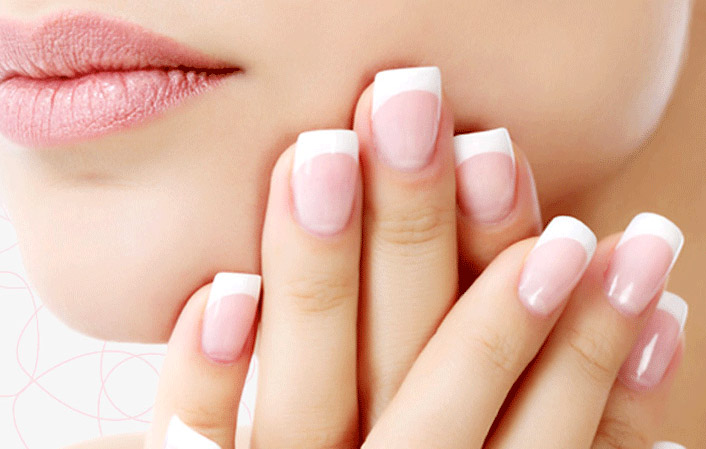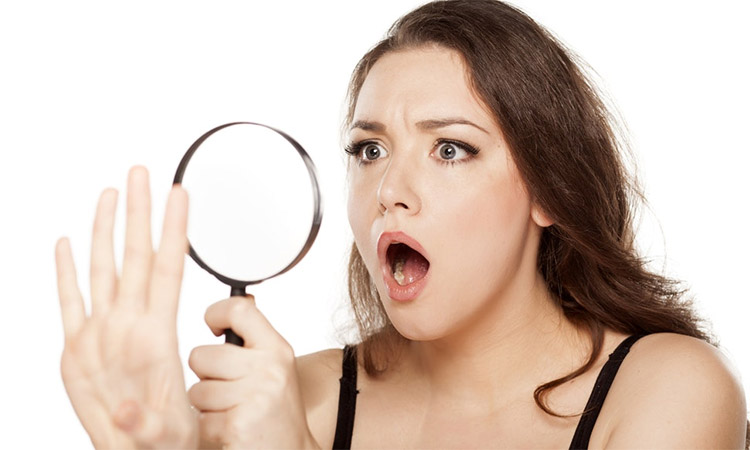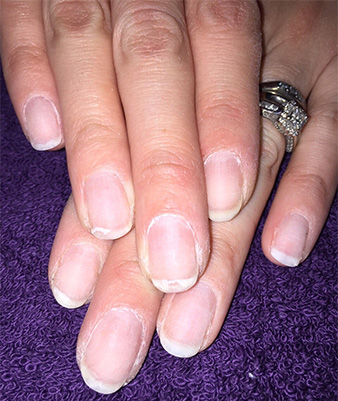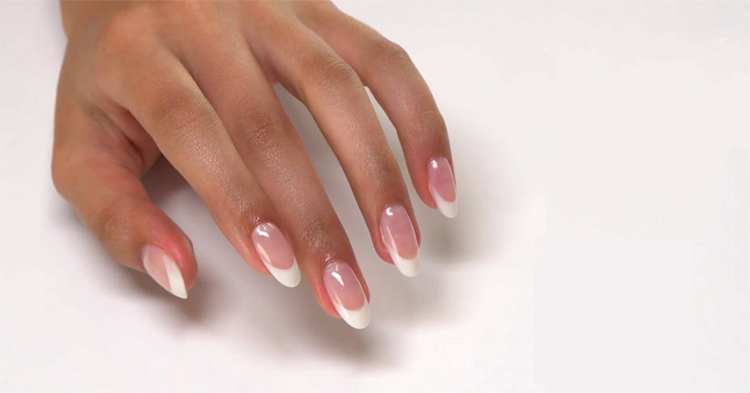
Let’s face it: we all love the long, shiny and perfectly looking long nails and we all hate it when it’s all gone. If you’re a big fan of acrylics, you may have been dealing with the situation over and over again. When you’re putting your nails under stress, it’s only a matter of time until they start cracking both figuratively and literally.
If you haven’t been very careful about your nail’s health (whether it’s your fault or the professional that you used when applying the acrylics), dealing with the damage after acrylics is impossible to avoid. This doesn’t mean that acrylics should always come with sacrificing the health of your nails. As long as you’re keeping in mind some tips, you should be able to wear acrylics without having your nails ruined for good.
Page Contents
Is the whole process damaging for your nails?
In order to understand the solutions, it’s better to get a better image on the whole process. The more you know about the process, the easier is going to be for you to reduce the damage. For instance, you should know that the process starts with filling the natural oil and the application of a good primer. The process continues with the application of the acrylic nail on top. This is going to be well sealed in place.

You may have to come back for a fill-in after a couple of weeks. You should get back for filling the gap between your nails and the acrylic one so that no water or any other kind of particle get into that open area. In case you’re not doing it, the risk for the acrylic nails to get loose or even cause an infection is pretty high.
However, if the filling is well done, you should need a new set in two months or so. You’re going to have to remove the old set and apply a new set. Your nails are going to be soaked in an acetone-based solution and the removing should take around an hour. Some may want to use a driller for removing faster the nails. The risk for damaging your nail bed though is quite high, no matter the type of removal process that is going to be used.
What is the possible damage?
The acrylics may not damage your nails every single time as there are so many factors that play a big part. The condition of your natural nails after the removal of acrylics depends a lot on the experience of your technician and the quality of products he/she’s using in the first place.
A lot of dryness and a thinning of the nail bed caused by the over-filling are pretty common. In the most severe situations, an E-filling gone wrong may cause “rings of fire”. You may even expect nail fungus in some situations.
In addition, the thinning of the nail bed is going to cause weakness, but also chipping and flaking of the nails.
How to recognize damaged nails?
 Made of laminated layers of keratin, nails should be even in color and textures, presenting no signs of discoloration or spots.
Made of laminated layers of keratin, nails should be even in color and textures, presenting no signs of discoloration or spots.
The vertical ridges running from the cuticle to the tip of the nails are no reason for worry. Furthermore, the vertical ridges are even more obvious as we age. Some white lines or spots may also appear in case of some injuries, but they’re going to grow out with the nail.
In order to make sure your nails are well and healthy, you should know the signs of damaged nails. Sometimes, you may even have to check it with a doctor or dermatologist for remedies:
- Thinning or thickening of the nails
- Changes in nail shape (curled nails, especially)
- Bleeding around the nails
- Swelling or pain in the nail areas
- Separation of the nails from the surrounding skin
- Changes in the nail color (discoloration of the whole nail or a dark streak under the nails
- The nails stop growing out
What to do after removing acrylics?
Eating healthy isn’t going to cut it when removing acrylics and you should do some things for improving the well-being and health of your nails.
Here are the things to do for having better and healthier nails after removing acrylics:
Start using regular nail polish
Even if the gel polish looks nice, it’s wiser to switch to a regular nail lacquer for some time. If you really cannot do it without nail polish, it’s better to go with a clear nail polish. this way, you’re going to notice how your nails are actually doing and growing.
Go with short nails for a while
If you’ve recently removed your acrylics and you’re determined to go back to a natural style for your nails, it’s always a good thing to go with shorter nails. You only have to do it until your natural nails grow out. Stay away from the extensions and maintain your nails well-trimmed. This way you’re also going to reduce the risk for natural nail breaking. And, as we all know, this always happens in the worst time possible.
Just wait
When it comes to nails, one thing you cannot do without is patience as it sure takes time until they grow back nice and healthy. Unfortunately, damaged nails are going to need to grow out entirely in order to be replaced by healthy nails. As you wait, use only the regular nail polish and don’t forget about moisturizing. For obvious reasons, stay away from the acrylics and don’t hesitate to take it to the doctor if you see no improvements whatsoever.
Always remember about moisturizing
You should consider about applying a cuticle oil and hand lotion on a regular basis. Acetone is drying and you need to reduce the risk with an effective cuticle oil and some nail and hand balm.
Eat the healthy food
If you want to speed up the healing process of your damaged nails, you should consider about increasing the intake of biotin and omega-3 rich food as it strengthens your nails. Eggs, almonds, avocados, peanuts, and sweet potatoes are rich in biotin and you should introduce them into your daily diet. Don’t forget about walnuts as they’re loaded with both omega-3 and vitamin E.
How to take care of your nails, in the first place?
It’s not only when you’re removing the acrylics that you notice your nails aren’t in their best shape. Dents, ridges or unusual color or shape are also signs that you need to step up your game when it comes to taking care of your nails.

Here’s what you need to do in order to maintain your nails nice and healthy:
- Develop a proper nail hygiene.
You should use sharp clippers and manicure scissors. It’s better to trim your nails straight across, around the tips and creating a delicate curve for the final touch.
- Keep them dry and clean
This is essential for blocking bacteria from developing under your fingernails. When you’re using a lot of water for a longer time, the risk for splitting your fingernails is quite high. Don’t forget to wear cotton-lined rubber gloves when you’re washing dishes or cleaning around the house with some harsh and damaging chemicals.
- Don’t forget to moisturize
Start using a hand lotion, rubbing it into your cuticles and fingernails. Keeping them well moisturized lowers the risk for damage later on.
You may also consider begin using a nail hardener in order to strengthen your nails.
- Take a look at biotin
one may even think about using nutritional supplement biotin for boosting the strength and health of brittle and weak fingernails. Ask your doctor about it.
What not to do when it comes to nails?
It’s not always something that you don’t do, but also something that you do with your nails, damaging them even more.
Here’s what you should try to avoid:
- Pull off hangnails
When you’re pulling off hangnails, you may even rip some live tissue along with the hangnail. Play it safe and clip off the hangnails.
- Bite your fingernails/picking at the cuticles
Yes, your mother was right: don’t bite your fingernails as you may damage the nail bed. Even the smallest cut alongside the fingernail may cause bacteria growth, leading to unpleasant infection.
- Use harsh nail care products
Try as much as you can to stay away from the nail polish remover. If you really need to use a nail polish remover, it’s wiser to go with an acetone-free formula.
- Solve any problem right away
When a nail problem doesn’t go away on its own or leads to other signs or symptoms, it’s better to check with your dermatologist or doctor for a more effective solution.
One last tip for the road

If you’re a big fan of professional manicures/pedicures, it’s better to go to salons that display their state license. Stick to technicians that are licensed by the state board too.
It’s better not to remove the cuticles as they protect the nails from infection. Make sure that the technician sterilizes the tools and that he/she uses a bleach solution for cleaning the foot baths. Better safe than sorry, remember?
Post originally published on www.instyle.com
